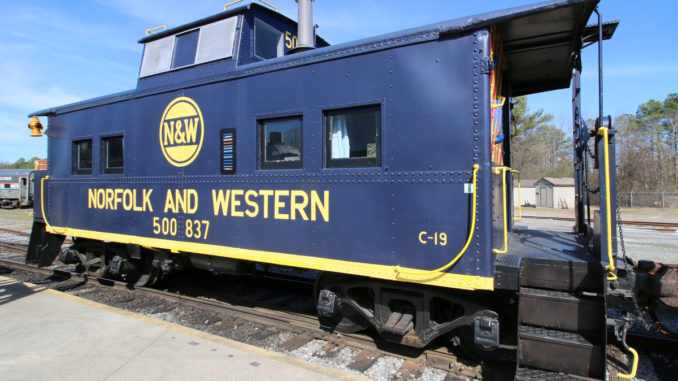
The caboose may be the most recognizable railroad car, but they are rarely seen on the rails today.
Interestingly, the word caboose may derive from the Dutch word “kombuis.” It originally referred to a galley on a ship.
Since they first appeared on the railroad scene, “the caboose has been the post for those monitoring the air pressure in braking systems, watching for dragging equipment, looking out for hazardous load shifts and, most important, checking car axles for overheated bearings that can lead to derailments,” The New York Times reported in 1985.
According to estimates, there were approximately 2,700 cabooses in use on American railroads in 1870. By 1900, there were more than 17,600 on the rails.
The Southeastern Railway Museum in Duluth, Georgia, will be celebrating the caboose during Caboose Days on April 7-8. The two-day, family-friendly event features live music, crafts and, of course, rides on vintage cabooses.
In advance of the celebration, here are five facts you may not have known about these beloved cars:
Mysterious Origins
Cabooses probably date to the 1830s, but the precise details of their history are uncertain. According to one theory, Auburn and Syracuse Railroad Conductor “Uncle Nat” Williams set up an office in an empty boxcar at the end of a freight train. He used a wood box for a chair and a barrel for a desk where he completed his paperwork.
Repurposed Cars
Railroads often repurposed old railcars into cabooses. At the Southeastern Railway Museum, Georgia Railroad Nos. 2866 and 2489 are two such examples. The railroad used old boxcars to create these cabooses. The railroad built No. 2489 during World War II when there was a steel shortage.
Different Designs
One common misconception is that all cabooses have cupolas. Chicago & North Western Conductor T. B. Watson is credited with creating the cupola caboose in 1863. Some, such as Georgia Railroad No. 2866, have bay windows instead, allowing conductors to watch trains from the side. Interestingly, this car carried passengers as part of mixed passenger and freight trains.
Home on the Road
For workers on the railroad, the caboose was home. Initially, the rear brakeman, responsible for applying the handbrakes to the freight cars on the rear of the train, worked out of the caboose. While cabooses might seem like a fun place to work, they were lonely as crews were away from their families for extended stretches. They could also be dangerous. In addition to derailments and train collisions, excess slack in the train could throw workers from their positions.
Undone by Technology
Until the 1980s, freight trains were required to have cabooses. However, several changes signaled the end of the line for cabooses, or cabeese, as some might say. New labor agreements reduced train crews’ hours of service requirements, meaning cabooses were no longer needed for lodging, and computer record-keeping meant crews did not necessarily need rolling offices. Also, remote radio devices named “End of Train” devices (EOTs) attached to the last car of the train measure the train’s air brake pressure and alert the train crew at the front of the train of any problems, and scanners along the tracks monitor passing trains for problems.
Todd DeFeo is a volunteer at the Southeastern Railway Museum.
